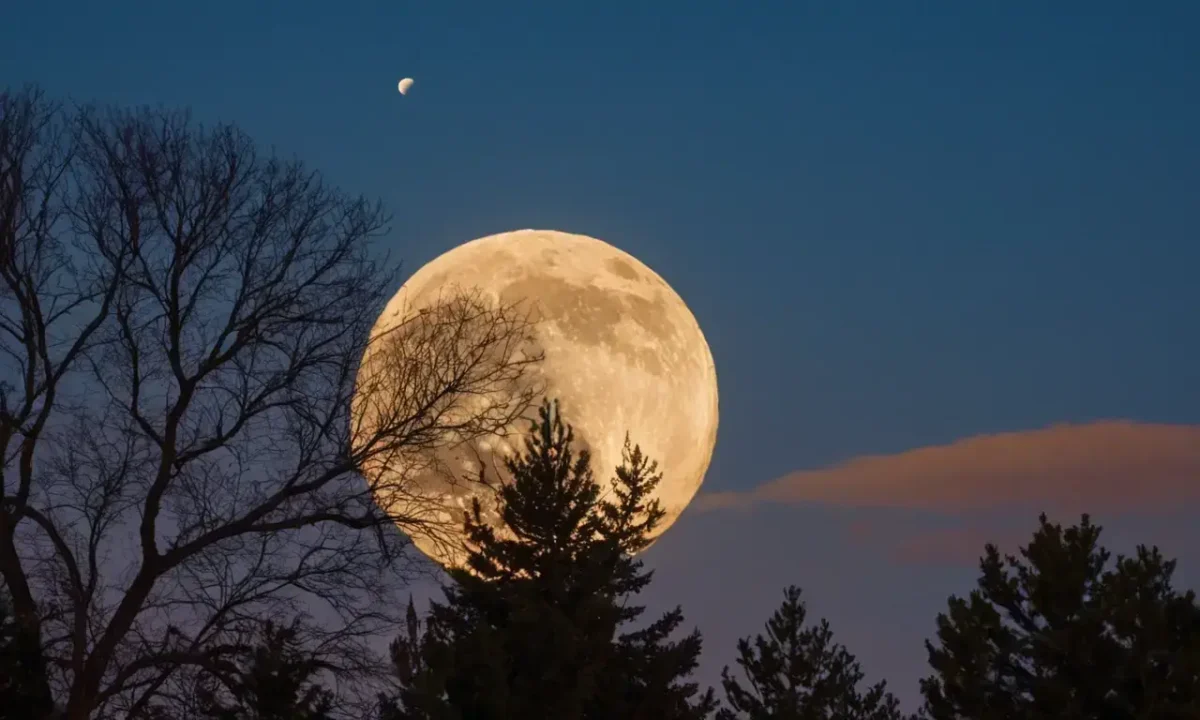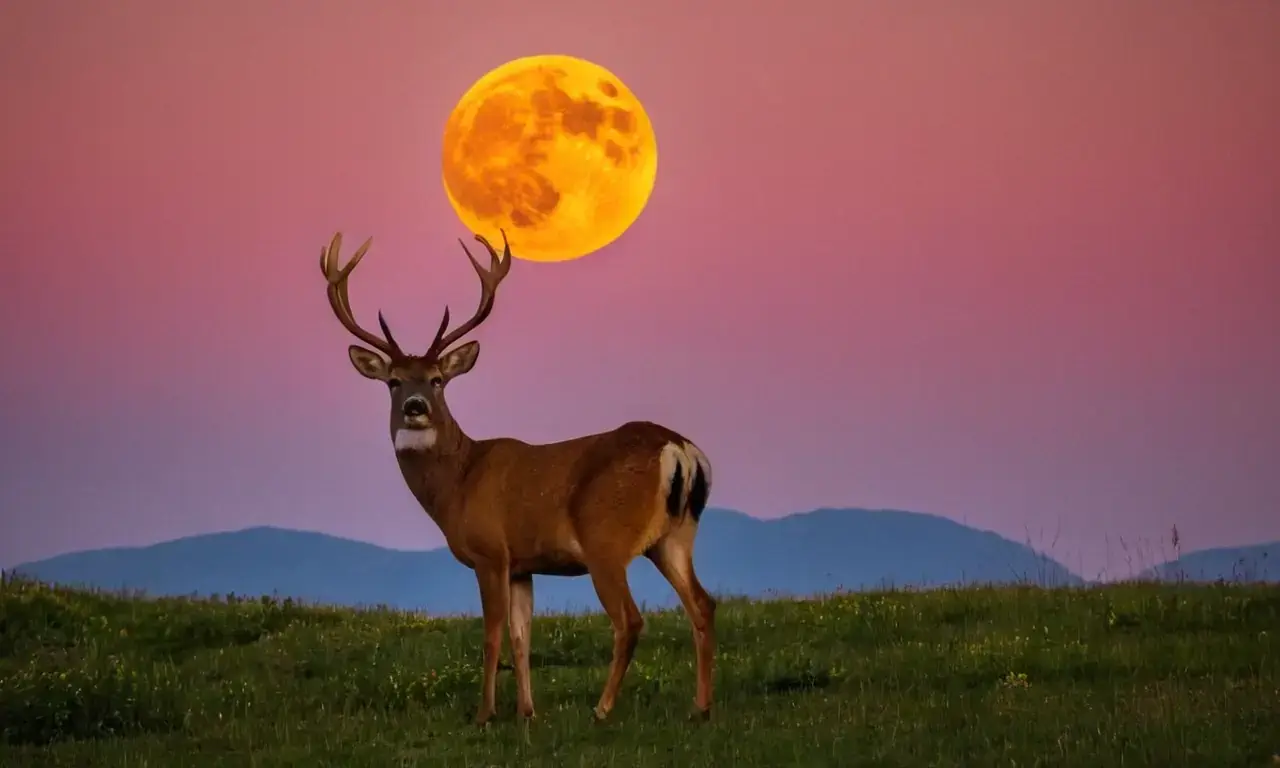
Buck Moon: July's Supermoon Brights Up the Night

The full moon, a celestial phenomenon that graces our night sky each month, holds a special place in human history and culture. It has inspired countless myths, legends, and traditions across various societies. One such full moon, known as the "buck moon," takes center stage during July. This lunar event is not just a visual spectacle; it's deeply intertwined with nature, folklore, and even astronomy. In this article, we delve into the fascinating world of the buck moon, exploring its historical origins, cultural significance, astronomical characteristics, and how to best observe this celestial wonder in 2023.
Our objective is to provide a comprehensive overview that will not only illuminate the "buck moon" but also deepen your understanding of the moon's role in our lives and the rich tapestry of human storytelling. We aim to make this exploration both informative and engaging, allowing you to appreciate the beauty and mystery of the night sky even more.
The "Buck Moon" and its Significance
The name "buck moon" is a testament to the natural world's cyclical rhythms. It originates from the time of year when male deer, known as bucks, actively grow their antlers. This period coincides with the full moon in July, making it a particularly striking event for those who observe the night sky.
The connection between the buck moon and deer behavior is rooted in the biology of these animals. During the summer months, male deer engage in a process called antler growth, which involves significant hormonal changes and physical exertion. This period coincides with the peak of daylight hours, allowing bucks to showcase their impressive antlers during mating season. As such, the buck moon serves as a visual reminder of nature's cyclical processes and the intricate relationship between animals and their environment.
Beyond its biological significance, the "buck moon" has also become a cultural touchstone in various societies. It is often celebrated with special events, rituals, and folklore that highlight the moon's influence on human life. This enduring connection between the buck moon and our cultural heritage speaks to the profound impact of celestial phenomena on our collective consciousness.
Historical Origins of the Name
The name "buck moon" has been passed down through generations, evolving from a simple observation of nature to a rich tapestry of folklore and tradition. While its exact origin remains shrouded in some mystery, various theories have emerged over time.
One popular theory suggests that the term originated from Native American cultures who observed the full moon's impact on deer behavior during this period. The "buck moon" became a way to mark the time when bucks were most active and visible, adding a layer of cultural significance to the lunar event.
Another theory points to European folklore, where the buck moon was associated with hunting practices. During this time, hunters would often use the full moon's illumination to their advantage, making it easier to track prey. This association between the buck moon and hunting further solidified its place in cultural memory.
Regardless of its exact origin, the "buck moon" has become a cherished part of our lunar calendar, symbolizing both nature's beauty and human ingenuity in understanding the cosmos. Its enduring presence across cultures speaks to the power of storytelling and how we connect with the natural world through shared experiences.
Supermoon Characteristics and Visibility
The buck moon is not just any full moon; it holds a special distinction as a "supermoon." This term refers to a lunar event where the moon reaches its closest point to Earth in its elliptical orbit, resulting in a larger and brighter appearance in the night sky.
In 2023, the buck moon is expected to be particularly prominent due to its proximity to Earth's orbital path. Astronomers predict that this full moon will appear about 14% larger and 30% brighter than a typical full moon. This increased visibility makes it an ideal time for stargazing enthusiasts to capture stunning images of the lunar landscape.
Observing a supermoon requires minimal equipment, as its brilliance is readily visible with the naked eye. However, using a telescope or camera can enhance your viewing experience and allow you to capture detailed images of this celestial wonder. Regardless of your chosen method, witnessing the buck moon in 2023 promises to be an unforgettable experience.
Cultural Traditions and Folklore

Across cultures and throughout history, the "buck moon" has been woven into various traditions and folklore, reflecting its significance in human societies. These cultural practices often highlight the moon's influence on nature, agriculture, and even mythology.
In Native American cultures, the buck moon is deeply intertwined with their spiritual beliefs and ceremonies. Many tribes have developed unique rituals and celebrations centered around this lunar event. For example, some tribes hold special dances or storytelling sessions to honor the "buck moon" and its connection to nature's cycles.
Furthermore, many European cultures associate the buck moon with harvest festivals and agricultural traditions. The full moon's illumination was believed to enhance crop growth and prosperity, making it a significant time for farmers to celebrate their hard work. These cultural practices demonstrate how the "buck moon" has served as a symbol of abundance and renewal throughout history.
Observing the Buck Moon in 2023
The buck moon is not just a celestial event; it's an opportunity for people to connect with nature and appreciate the beauty of our universe. Whether you choose to observe it through stargazing, photography, or simply by enjoying its presence in your daily life, this lunar event offers a unique chance to reflect on our place within the cosmos.
For those interested in observing the buck moon in 2023, several resources can help guide your experience. Online astronomy websites and apps provide detailed information about the moon's phases and predicted visibility. Additionally, local astronomical societies often host public viewing events where you can learn more about celestial phenomena and connect with fellow enthusiasts.
No matter how you choose to observe the buck moon, remember that this event is a reminder of the interconnectedness between humans and the natural world. By taking time to appreciate the night sky, we not only deepen our understanding of the universe but also strengthen our connection to something larger than ourselves.
Celestial Events and Their Impact
The "buck moon" is just one example of how celestial events have shaped human history and culture. Throughout history, humans have looked to the stars for guidance, inspiration, and a deeper understanding of their place in the universe.
One such event that has profoundly impacted humanity is the lunar cycle. This natural phenomenon involves the moon's continuous journey around Earth, resulting in a monthly change in its position relative to our planet. The lunar cycle has played a significant role in shaping agricultural practices, religious rituals, and even cultural celebrations.
For example, many ancient civilizations developed calendars based on the lunar cycle, using it as a guide for planting crops and marking important events. This reliance on the moon's cyclical movements highlights its enduring significance in human societies. Furthermore, various cultures have incorporated lunar symbolism into their mythology and folklore, further emphasizing the moon's profound impact on our collective consciousness.
Conclusion
The "buck moon" is more than just a full moon; it's a cultural touchstone that connects us to nature's cycles and the vastness of the universe. From its historical origins in hunting practices and folklore to its modern-day significance as a celestial event, the buck moon continues to fascinate and inspire people across cultures.
Whether you choose to observe it through stargazing, photography, or simply by appreciating its presence in your daily life, this lunar event offers a unique opportunity to connect with something larger than ourselves. By taking time to appreciate the night sky, we not only deepen our understanding of the universe but also strengthen our connection to something truly extraordinary.
Leave a Reply





Related Links